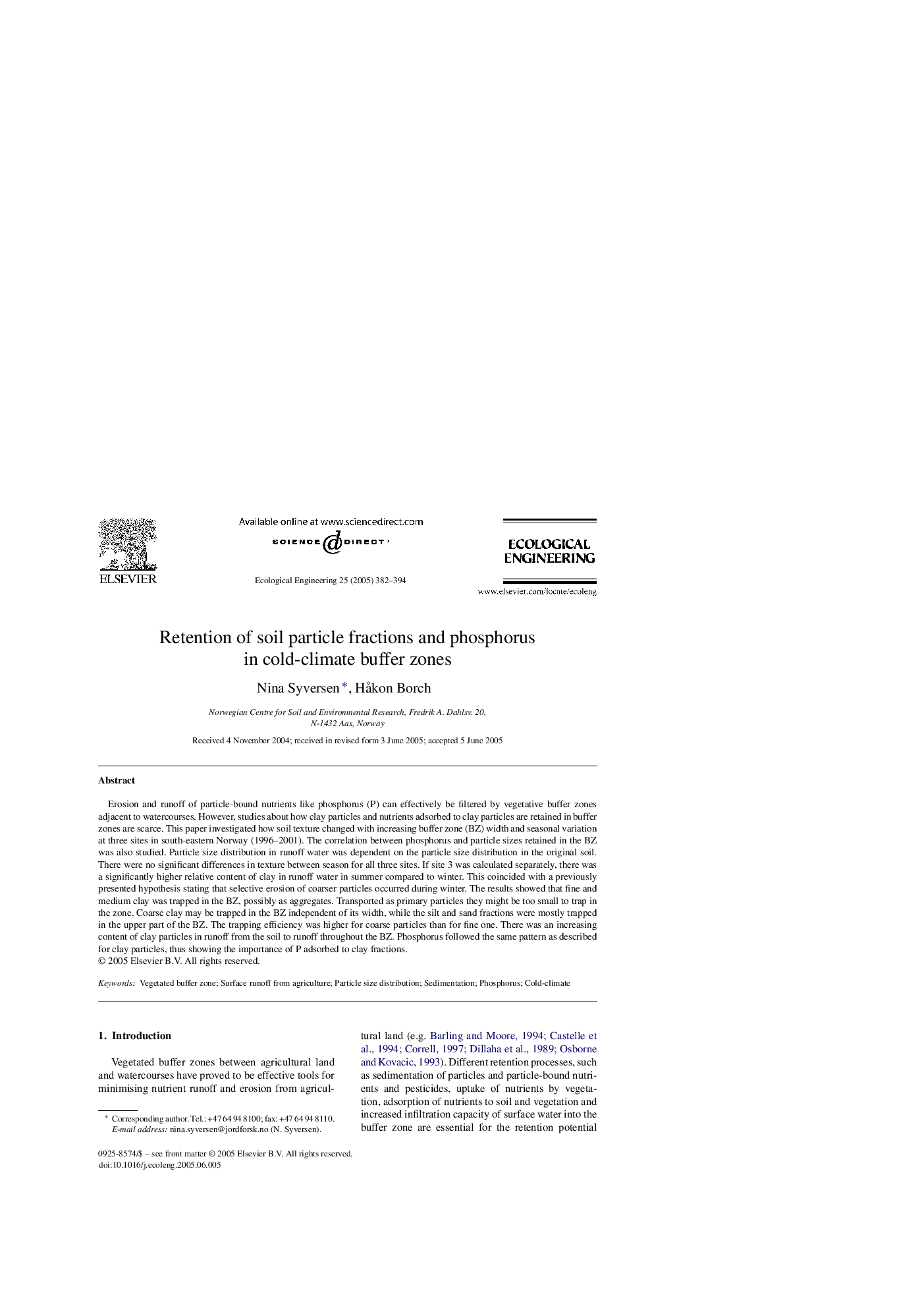| Article ID | Journal | Published Year | Pages | File Type |
|---|---|---|---|---|
| 9447563 | Ecological Engineering | 2005 | 13 Pages |
Abstract
Erosion and runoff of particle-bound nutrients like phosphorus (P) can effectively be filtered by vegetative buffer zones adjacent to watercourses. However, studies about how clay particles and nutrients adsorbed to clay particles are retained in buffer zones are scarce. This paper investigated how soil texture changed with increasing buffer zone (BZ) width and seasonal variation at three sites in south-eastern Norway (1996-2001). The correlation between phosphorus and particle sizes retained in the BZ was also studied. Particle size distribution in runoff water was dependent on the particle size distribution in the original soil. There were no significant differences in texture between season for all three sites. If site 3 was calculated separately, there was a significantly higher relative content of clay in runoff water in summer compared to winter. This coincided with a previously presented hypothesis stating that selective erosion of coarser particles occurred during winter. The results showed that fine and medium clay was trapped in the BZ, possibly as aggregates. Transported as primary particles they might be too small to trap in the zone. Coarse clay may be trapped in the BZ independent of its width, while the silt and sand fractions were mostly trapped in the upper part of the BZ. The trapping efficiency was higher for coarse particles than for fine one. There was an increasing content of clay particles in runoff from the soil to runoff throughout the BZ. Phosphorus followed the same pattern as described for clay particles, thus showing the importance of P adsorbed to clay fractions.
Related Topics
Life Sciences
Agricultural and Biological Sciences
Ecology, Evolution, Behavior and Systematics
Authors
Nina Syversen, HÃ¥kon Borch,
